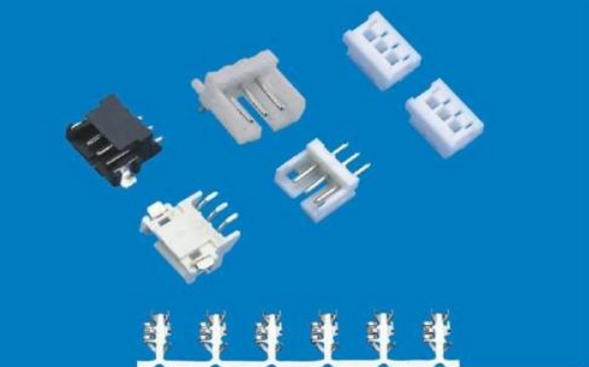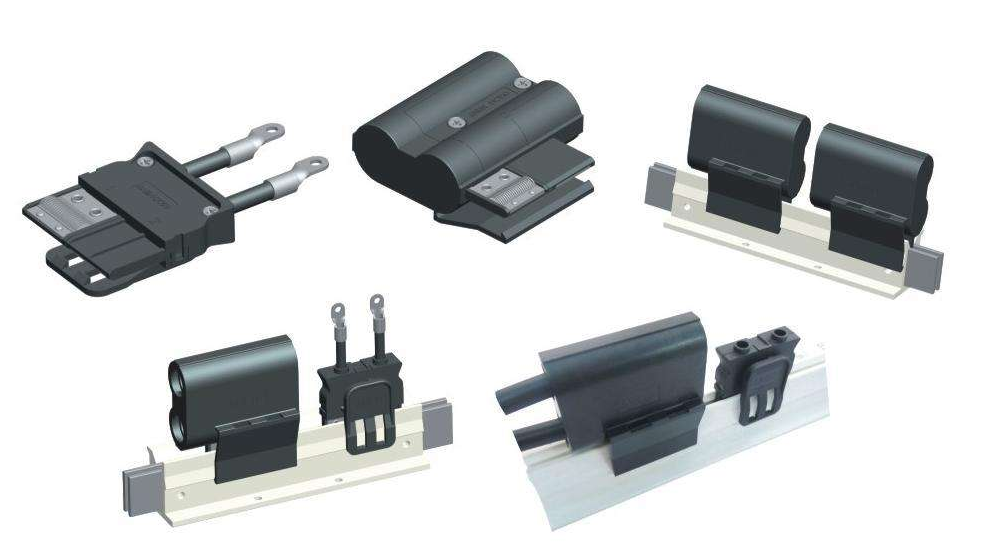A connector is a motor system that provides a detachable interface for connecting two secondary electronic systems without unacceptable effects on the operation of the system. The key words in the definition are "motor system", "separable" and "unacceptable effect". A connector is a motor system because it is an electrical connection that is produced mechanically. As will be discussed, the deflection of the mechanical spring creates a force between the mating portions, which creates a metallic contact between the mating faces of the interface.
The reason why the application connector is in the first place is that the interface is separable. The need for separability has many reasons. It allows for the manufacture of parts or subsystems independently and the final assembly can be done in one main place. Separability also allows maintenance or upgrades of parts or subsystems without having to modify the overall system. Another reason for the separability to be applied is portability and support for the expansion of peripherals.
On the other hand, the separability in the definition introduces an additional interface between subsystems that does not introduce any "unacceptable effects", especially in terms of system characteristics that cannot be affected by telecommunications, such as Unacceptable distortion and signal degradation between systems, or power loss through the connector, power loss calculated in millivolt losses, will become the main design criteria for functionality, so the power requirements of the motherboard will also increase. The need for separability and the limits of "unacceptability" are determined by the application of the connector.
The separability includes the number of mating cycles, which are the forces that the connector must provide without affecting its performance and the forces necessary to match the other connector. Typical mating cycle requirements range from tens of cycles of internal connectors to thousands of cycles of peripherals, such as PCMCIA type connectors. As the number of circuits or functions and the interconnection of connectors increase, the need for strength is becoming more important. In order to provide more functionality, the position of the terminals on the connector must also be increased, which results in a higher connector fit. Depending on the use and function of the connector, the number of terminals varies from tens to thousands.

1, according to soldering method is divided into: DIP class (eg: PCI 120P), SMT class (eg: MINI PCI EXPRESS)
2, according to the appearance can be divided into: external type and internal type
External types are:
I/O: D-Subminiature connector (also known as D-SUB connector), USB, 1394, DDR, VGA, SCSI, etc.
CARD: SD, SIM, NEW CARD, etc.
JACK: RJ11, RJ45 and other RF

Electronic connector
power supply
Other: SCSI, DVI, etc.
Internal types are:
Board to board
Wire-to-board
Wire-to-line
Flexible Circuit Board (FPC): ZIF
HDD: BOX, PIN-Header & Socket
Edge Card: AGP, PCI
CPC Socket: 478, SLOT-1, SLOT-2
Memory: DIM, SO-DIM
Other: MINI PCI
As the structure of connectors has become increasingly diverse, new structures and applications have emerged, and attempts to solve classification and naming problems with a fixed pattern have become difficult to adapt. Still, some basic classifications are still valid.
1. Level of interconnection
InterconnecTIon can be divided into five levels depending on the function of the internal and external connections of the electronic device.
1 chip package internal connection
2 IC package pin and PCB connection. Typical connector IC socket.
3 The connection of the printed circuit to the wire or printed board. A typical connector is a printed circuit connector.
4 The connection between the bottom plate and the bottom plate. A typical connector is a cabinet connector.
5 The connection between the device and the device. Typical products are round connectors.
There are some overlaps at levels 3 and 4. Among the five levels of connectors, the highest market is the third and fifth level products, and the fastest growing is the third level.
2. The level of connector specifications.
According to the classification of the International Electrotechnical Commission (IEC), connectors are electromechanical components for electronic equipment. The specification levels are:
Family example: connector
Sub-family example: circular connector
Type example: YB type circular connector
Variety (style) example: YB3470
Specification
3. The definition of connectors in our country.
In China's industry management, connectors and switches, keyboards, etc. are collectively referred to as electrical connector components, while electrical connector components and relays are collectively referred to as electromechanical components.
4. The product category of the connector.
Although the division of connector product types is somewhat confusing, technically, there are only two basic methods for the connector product category: 1 by shape: circular and rectangular (cross-section), 2 by operating frequency: low frequency and high Frequency (by 3MHz).
According to the above division, the coaxial connector is circular, and the printed circuit connector is rectangular (from the historical point of view, the printed circuit connector is indeed separated from the rectangular connector), and is currently popular. The rectangular connector has a trapezoidal cross section and is approximately rectangular. The frequency division of low frequency and high frequency and radio waves is also basically the same.
As for other uses, installation methods, special structures, special properties, etc., many different types can be divided, and often appear in the publications and manufacturers' promotional materials, but generally only to highlight a certain feature and use, the basic classification is still There is no more than the above division principle.
Taking into account the technical development and actual conditions of the connector, from its versatility and related technical standards, the connector can be divided into the following categories (classified): 1 low frequency circular connector; 2 rectangular connector; 3 printed circuit Connector; 4 RF connector; 5 fiber connector.
5. The model name of the connector.
The model name of the connector is the basis for customer procurement and manufacturer organization production. In the connector industry at home and abroad, there are two ideas for product model naming: one is to use the letter code plus the number method, and strive to reflect the main structural characteristics of the product in the model naming. The advantage of this method is that it is easy to identify, but the arrangement is too long and too complicated. As the connector is miniaturized, it brings a lot of difficulties to printing. At present, this method is still popular in China, and is regulated in some industry standards and even national standards, such as SJ2298-83 (printed circuit connector), SJ2297-83 (rectangular connector), SJ2459-84 (band cable connection). ()), GB9538-88 (band cable connector), etc. Due to the increasing variety of connector structures, it has become increasingly difficult to cover a certain type of connector with a naming convention in practice. Another way of thinking is to use a combination of Arabic numerals. The benefits of this approach are simple and easy to use for computer management and logo printing for small products. This is the way the major connector manufacturers in the world currently use this. It can be expected that the naming schemes that reflect the characteristics of each manufacturer will gradually replace the method of stipulating certain naming rules by the whole industry under the planned economic system.
Electronic connector development trendAccording to 2012 data, the interconnection industry achieved medium-digit growth in 2011, achieving annual sales revenue of around US$48 billion, a record high! At the same time, 2011 is also the most memorable year for the global interconnection industry. China's interconnected enterprises have begun to develop at a high speed, and the global interconnection industry has also begun to shift to a “growth modelâ€.
ZGAR AZ MC Disposable
ZGAR electronic cigarette uses high-tech R&D, food grade disposable pod device and high-quality raw material. All package designs are Original IP. Our designer team is from Hong Kong. We have very high requirements for product quality, flavors taste and packaging design. The E-liquid is imported, materials are food grade, and assembly plant is medical-grade dust-free workshops.
Our products include disposable e-cigarettes, rechargeable e-cigarettes, rechargreable disposable vape pen, and various of flavors of cigarette cartridges. From 600puffs to 5000puffs, ZGAR bar Disposable offer high-tech R&D, E-cigarette improves battery capacity, We offer various of flavors and support customization. And printing designs can be customized. We have our own professional team and competitive quotations for any OEM or ODM works.
We supply OEM rechargeable disposable vape pen,OEM disposable electronic cigarette,ODM disposable vape pen,ODM disposable electronic cigarette,OEM/ODM vape pen e-cigarette,OEM/ODM atomizer device.


Disposable E-cigarette, ODM disposable electronic cigarette, vape pen atomizer , Device E-cig, OEM disposable electronic cigarette
ZGAR INTERNATIONAL(HK)CO., LIMITED , https://www.zgarecigarette.com